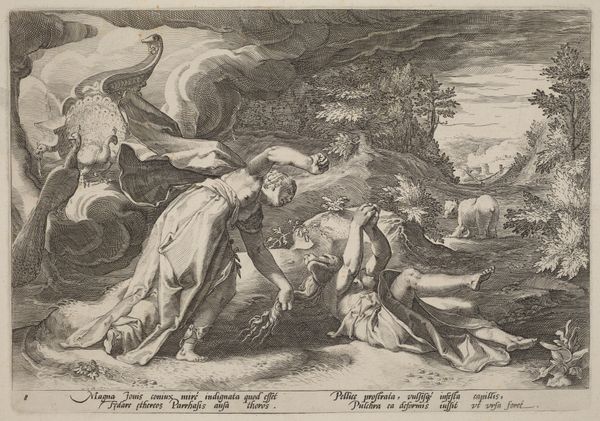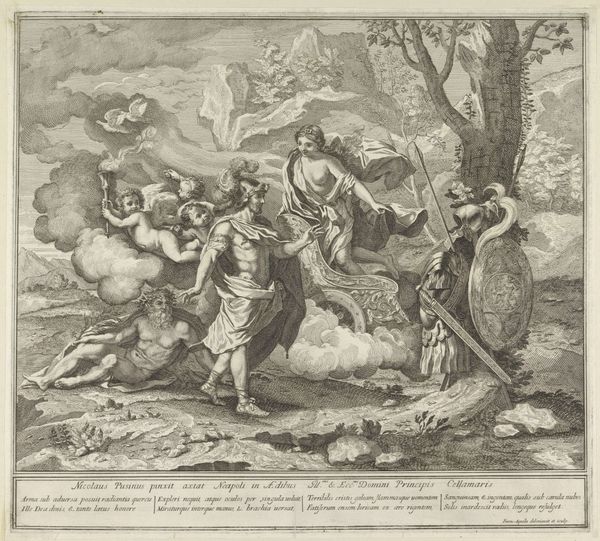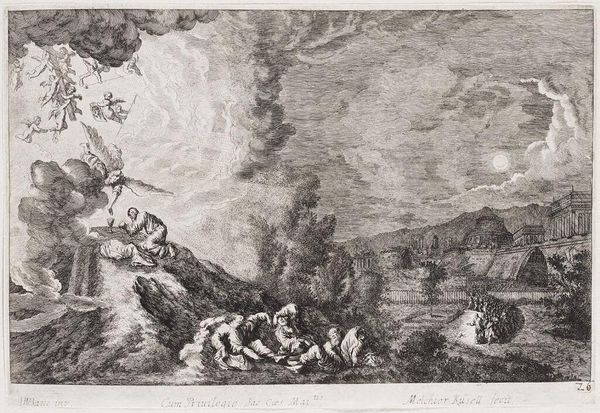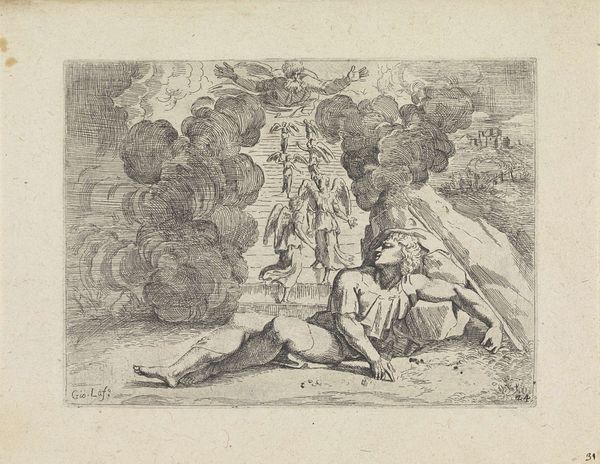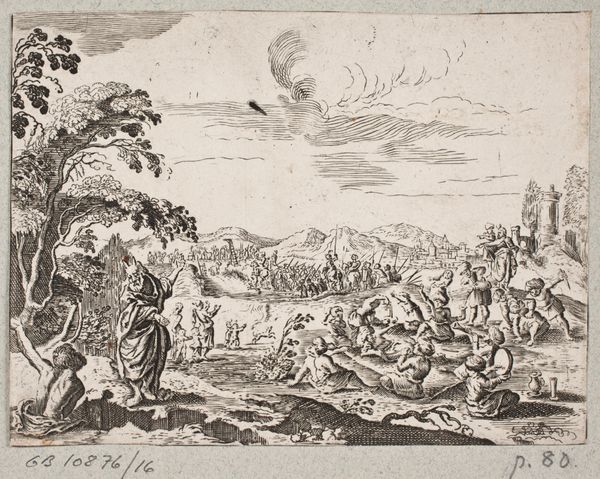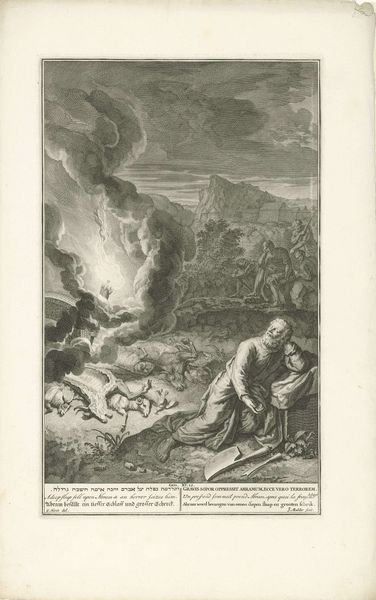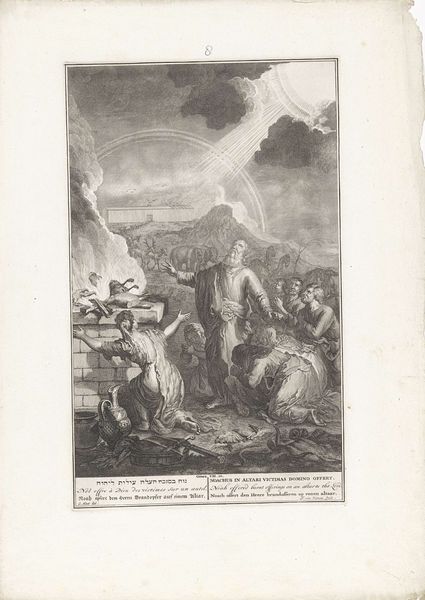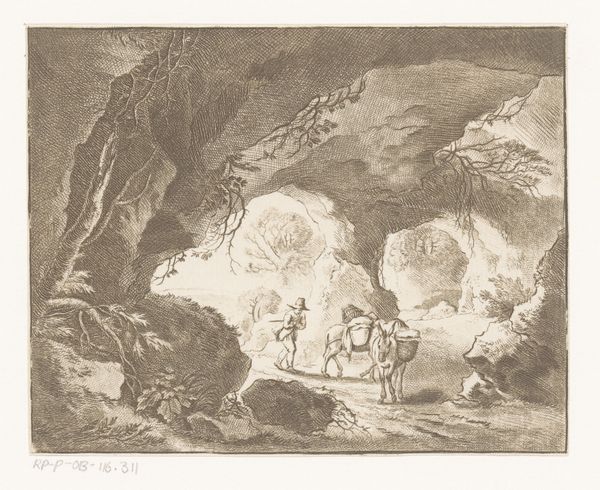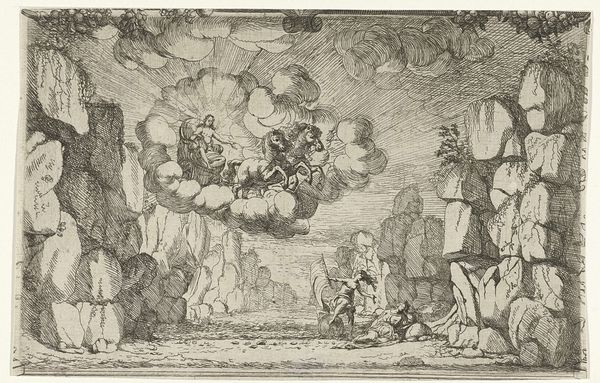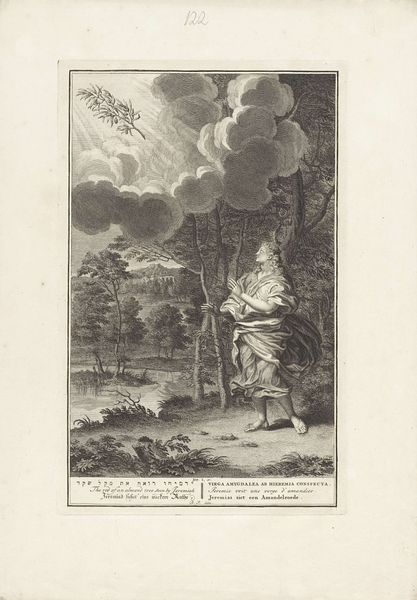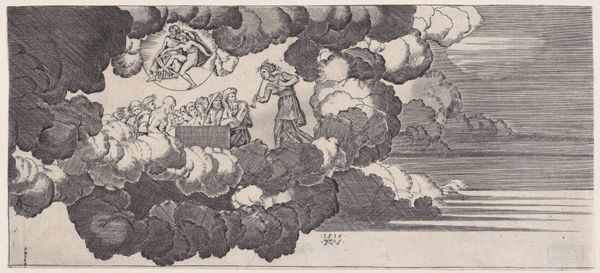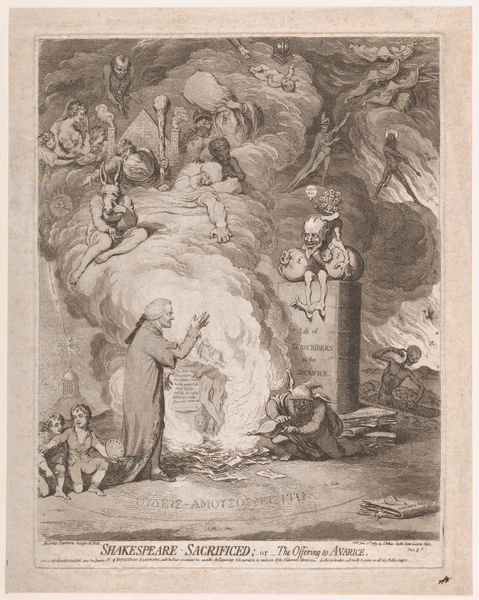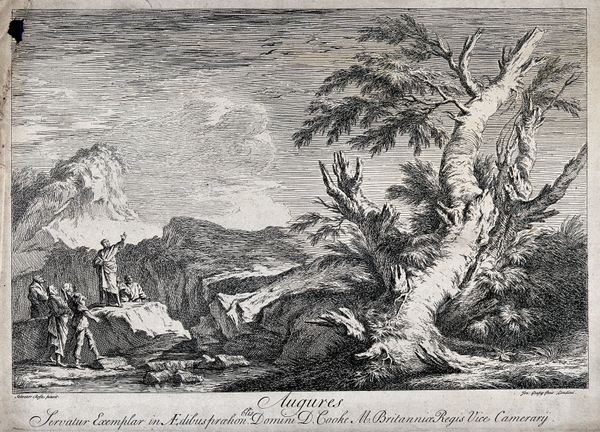
drawing, print, engraving
#
drawing
#
baroque
# print
#
landscape
#
figuration
#
line
#
history-painting
#
engraving
Dimensions: Plate: 6 11/16 × 10 1/16 in. (17 × 25.5 cm) Sheet: 8 1/8 × 11 1/4 in. (20.7 × 28.5 cm)
Copyright: Public Domain
Editor: Here we have Melchior Küsel's engraving, "The Agony in the Garden," created around 1670. It's striking how Küsel captures the emotional weight of the scene through line and composition. What do you see in this piece that stands out? Curator: I'm drawn to the historical and socio-political layers within this seemingly religious depiction. It speaks to the relationship between power, vulnerability, and faith in the 17th century. Think about the historical context: Europe was riddled with religious conflicts, and representations of religious figures carried immense political weight. Editor: Could you elaborate on the political weight? Curator: Consider how images like these reinforced specific doctrines, impacting social order and individual belief. This particular portrayal, set against the backdrop of a fraught era, begs us to consider its relationship to power dynamics and the role of the individual against societal expectations. Where does this leave those who suffered under political suppression? Editor: It makes me think about the subjects other than Jesus; the almost huddled mass of men off to the bottom right… they’re presented as both complicit and passive to their political reality. Is that fair? Curator: Absolutely. Notice the passivity mirrored throughout the composition, not just in the disciples. What do those artistic choices tell us about the intended audience and the social messaging? How does the visual narrative construct power dynamics and gender roles? What is our takeaway, and can we actively shift those messages? Editor: I see what you mean. The way the scene is framed invites us to analyze the era's sociopolitical complexities beyond the surface-level religious narrative. Curator: Precisely! Understanding art involves confronting its place within intersectional narratives. Doing so enables us to explore these hidden dimensions of this work, giving agency to new audiences. Editor: That gives me a lot to consider in terms of visual rhetoric. Thanks!
Comments
No comments
Be the first to comment and join the conversation on the ultimate creative platform.
